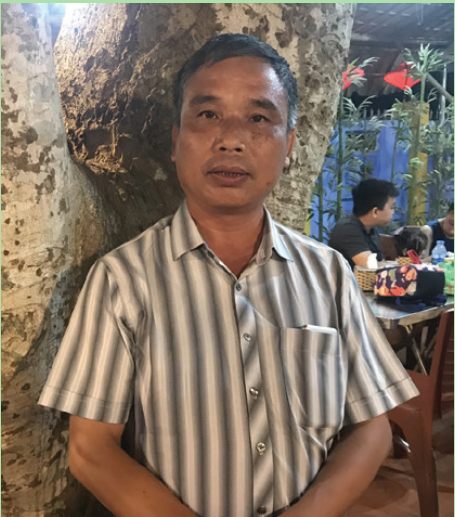Speeches Shim

Mr. Vì Văn Hạnh is Head of Lùn Village in the forested Son La Province. His village, like many others in the province, suffers from a lack of infrastructure, livelihood opportunities, and general poverty. As residents have turned to the forests for a source of income, the forests have increasingly come under pressure and are at risk of overuse. To alleviate this double challenge of preserving the forests and providing income opportunities, the Government of Vietnam developed and implemented the Payment for Forest Environmental Services (PFES) system. Through the PFES system, hydropower companies and other downstream forest service users pay upstream forest communities to protect their forests and watersheds against deforestation and degradation, to ensure the companies have a stable water supply to produce electricity. In Son La province, the annual total PFES revenue is approximately $5 million (VND 120 billion), which is disbursed in payments to around 2,200 villages to protect their forests. One of the key objectives of these payments is to support local livelihoods in order to reduce pressure on forests for income and to provide other opportunities, through a transparent and community-based decision-making process. Community savings funds are one way PFES can help improve the villages’ economic situations and provide residents access to loans to start local businesses. However, many village leaders, including Mr. Hạnh, had not followed through on that goal and instead made decisions on their own about how to use the funds.
In August 2019 the USAID Vietnam Forests and Deltas (VFD) Program worked with the Son La Forest Protection and Development Fund (FPDF), the provincial agency administering the implementation of PFES, to develop a village regulation on how to use payments for forest environmental services. The regulation includes guidance on establishing a community, women-led, revolving fund as a resource for conservation-friendly agricultural livelihoods. Appointing women to manage the funds addresses one of the gender gaps that exist in many of these communities. Each women’s savings fund is established with clear roles assigned to each member to monitor receipt and distribution of the payments. VFD provides basic instruction on financial management, meeting facilitation and record keeping to help start the funds. VFD also joins monthly meetings to monitor progress and provide support. During these meetings the women’s savings fund members review loan requests from community members, approve disbursement of loans, and accept repayments, all in a fully open and transparent manner. Most loans are used for agricultural livelihoods, such as purchasing new livestock or seeds. Some families use loans for school fees or medical needs. Unlike many other community savings funds that rely on individual household contributions or seed funding from an NGO donor, the PFES system encourages villages to build a community fund in an innovative and sustainable way. Members can also invest their own money into the fund to gain additional shares and earn interest.
The village regulation concept was quickly approved by the Son La commune authorities, but many village leaders were not convinced about the community funds. To overcome this challenge and generate commitment and support from village leaders, VFD and the Son La FPDF implemented capacity building and advocacy activities. These included monthly meetings for women’s groups and village leaders to demonstrate the benefits of the PFES savings funds, focusing on how they could support local livelihoods, and how they help villages address poverty. Gradually, village leadership began to see the benefits, and agreed to contribute their PFES revenues to the women’s savings funds for loans for livelihood development. Mr. Hạnh was among those village leaders who changed his perspective after the meetings. He shared, “At first, I was worried about this model because in the past, other kinds of saving groups did not perform well. However, once I understood the village regulations for the payments for forest environmental services I was persuaded and felt more confident to transfer the payments to the savings fund. I hope that the group will work well to become a local bank to maintain the fund to support the village’s economic development.”
The savings funds empower women in the community by giving them control of financial resources. One of these women is Ms. Giang Thi Ca, who is the head of the Nậm Nghiệp village women’s union in Son La. Ms. Ca was very emotional when sharing, “This is a very meaningful activity for women in our village, because women here usually aren’t respected much. Most of them rely on their husband. With this new access to loans, we have a chance to save money and invest in things like livestock that can help improve our living condition and the local economy.”
At a meeting with women’s savings fund groups. (Photo: USAID Vietnam Forests and Deltas (VFD) Program)
By March 2020, six village leadership management boards, including Mr. Hanh’s Lùn Village, had agreed to contribute a total of eight thousand dollars (VND 183 million) to their women’s savings funds. This was a breakthrough for Son La to see PFES money committed to the funds, and community members are motivated to join the savings groups because the payments for forest environmental services create a strong foundation and allow sooner access to loans. The USAID Vietnam Forests and Deltas project has provided key support to manage these funds, leading to greater opportunities for improved livelihoods and paths out of poverty.

Comment
Make a general inquiry or suggest an improvement.